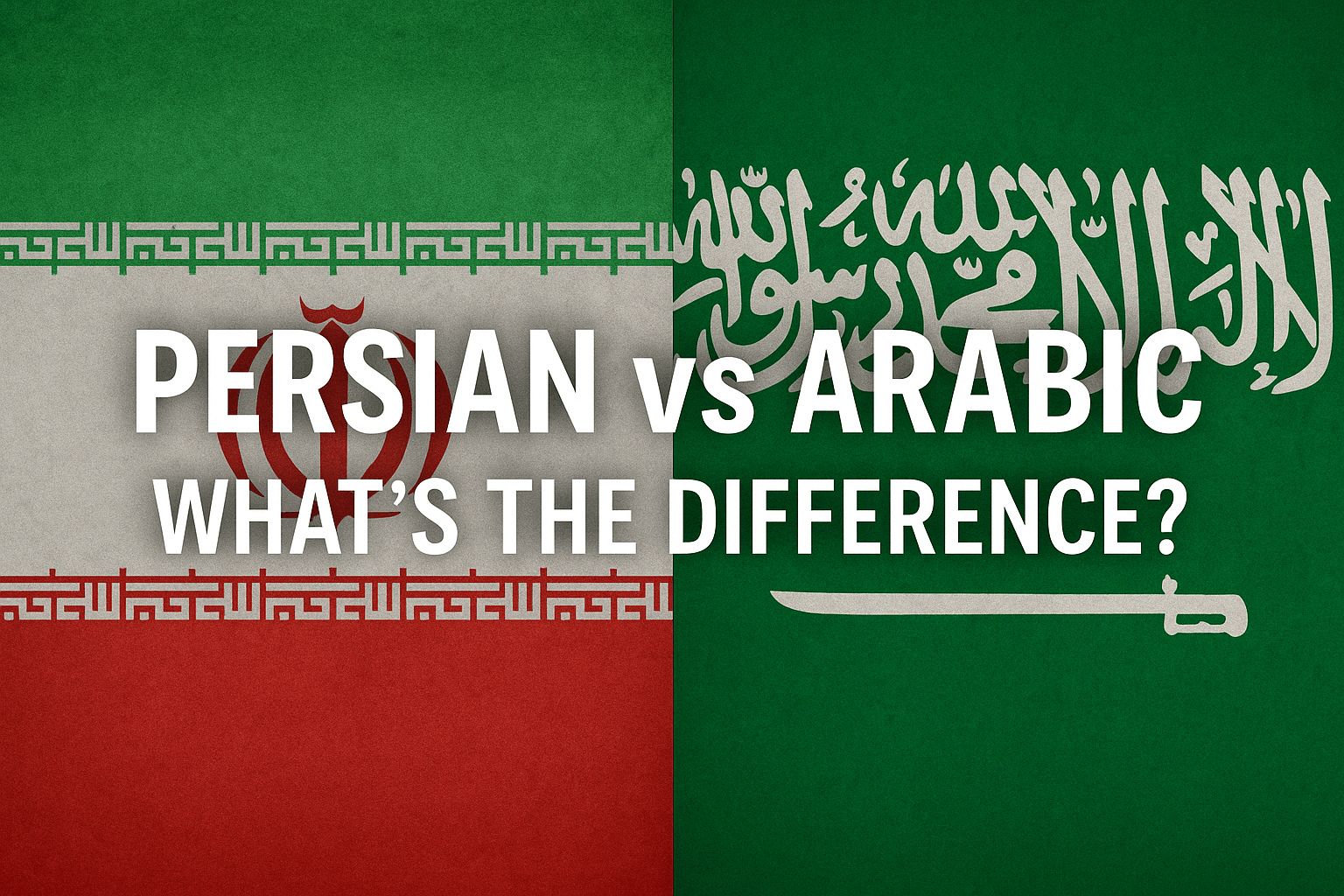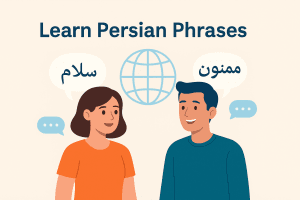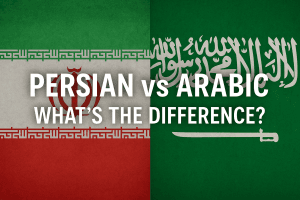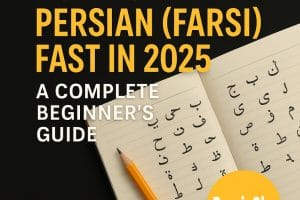
Persian vs Arabic: What’s the Difference? 🌐🔍
When people hear Persian and Arabic, they often assume they are the same or very similar. While both languages are spoken in the Middle East and use similar scripts, they are actually very different. In this article, we compare Persian vs Arabic — covering their origins, grammar, vocabulary, pronunciation, and more — so you can decide which one to learn and why.
1. Language Family and Origins 🌎
Arabic is a Semitic language, part of the same family as Hebrew and Aramaic. Persian, on the other hand, is an Indo-European language, related to English, French, and Hindi. This means that Persian and Arabic are as different from each other as English is from Hebrew!
2. Alphabet and Script ✏️
Both Persian and Arabic use versions of the Arabic script, but Persian has four extra letters (پ, چ, ژ, گ) to represent sounds that don’t exist in Arabic. Persian script is also generally easier to read because it is more consistent in how letters are used.
3. Grammar 📖
Arabic grammar is considered more complex, with features like dual forms, root-pattern morphology, and gendered verbs. Persian grammar is relatively simple:
- No gender for nouns
- Simple verb conjugation
- No definite articles like “the”
4. Vocabulary 📊
Persian has borrowed many words from Arabic, especially in literature and religion, but most of its everyday vocabulary is different. If you learn Persian, you’ll also notice some words that sound familiar if you speak English or French, due to their Indo-European roots.
5. Pronunciation 🎧
Arabic pronunciation includes sounds that are not found in many other languages, which can be difficult for beginners. Persian pronunciation is softer and generally easier for English speakers to master.
6. Geographic Reach 🌏
Arabic is spoken in over 20 countries and is one of the most widely spoken languages in the world. Persian is mainly spoken in Iran, Afghanistan (as Dari), and Tajikistan (as Tajik). However, Persian has a rich literary and cultural tradition that attracts learners worldwide.
That depends on your goals! If you want to travel, work, or connect culturally with Iran and its people, Persian is your best choice. It’s also considered easier for beginners.
If you’re interested in religion, diplomacy, or traveling across many countries in the Arab world, Arabic might be the better option.
Still not sure? Read this insightful post on how long it takes to learn Persian.
Or explore this guide to learning Arabic to help you decide.
But if you want to learn Persian in a fun and effective way, you’re in the right place! ✨
Start Learning Persian Today ✨🎓
Ready to begin your Persian journey? Check out our beginner-friendly courses that make learning Persian simple, interactive, and enjoyable.



